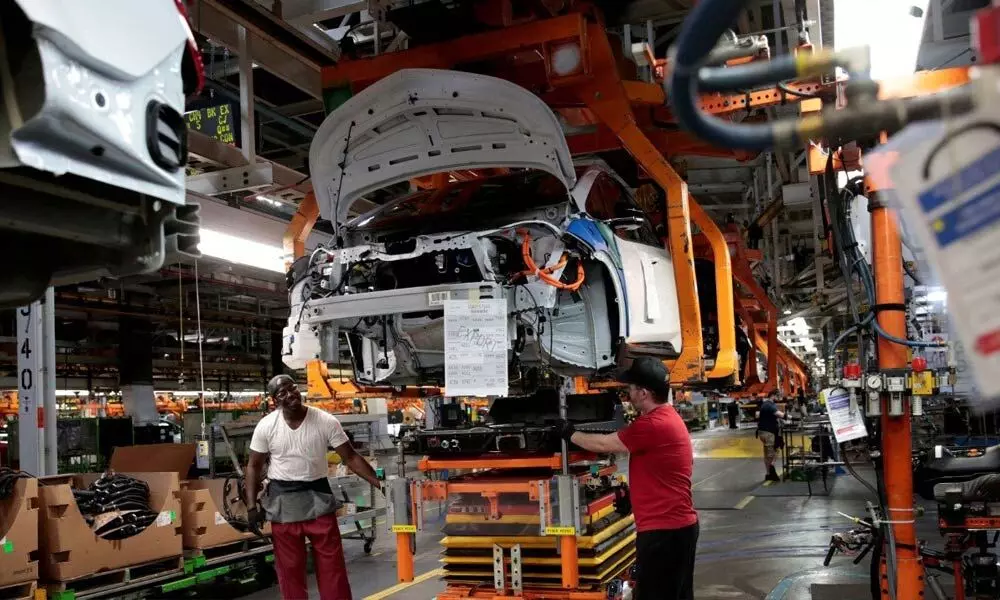How e-carmakers burning cash on R&D
Returns on invested capital and on assets have been dropping over time. It may take a little more parsing to find value under all the green exuberance. It’ll take even more to see decent equity returns any time soon
image for illustrative purpose

Car companies account for a fifth of global R&D spending. But they don't have much to show for it
Car companies are some of the biggest spenders in the world. You'd think they'd work harder at allocating capital. But, if that's even occurred to them as an issue, you'd never be able to tell from the amount of money they're throwing into the still-nascent electric vehicle market.
Automakers have spent more on research and development over the last decade than they have made in profits. They account for a fifth of global R&D spending. But they don't have much to show for it: There are only a few good electric cars on the road. Returns on invested capital and on assets have been dropping over that time. Whether and when this investment will return much of anything - and what the final cost of transition will be - is up in the air.
A big part of the capital outlay is going toward intangibles like electric and battery technology research, patent acquisition and protection, and future-forward intellectual property as opposed to hard assets like tangible equipment and property - things that have a definitive value.
What does this mean for company book values and eventually actual profits? So far, it doesn't look great.
Tata Motors Ltd.-owned Jaguar Land Rover Automotive Plc last month said it was expecting to take a one-time, non-cash write down of approximately £1 billion ($1.4 billion) for higher previous spending and certain planned productions not being completed. That follows a £3.1 billion exceptional impairment charge in the quarter ended December 2018, over half of which was allocated against intangible asset. Cash spent on research and development per unit was the highest among peers, according to a Sanford Bernstein analysis based on 2019 figures.
Meanwhile, Aston Martin Lagonda Global Holdings Plc took an impairment charge of £79.3 million last year. The company said it entered a technology agreement with Mercedes-Benz AG during the year and that resulted in an updated strategy focused on future vehicle powertrains along with impairment of development costs. The charges included writing down "existing hybrid powertrain development to nil."
Those are just the latest spendthrift examples. An underlying issue is the assumption that new technologies are (or were) certain to create value and, in turn, produce profits and cash flows in the near future. Ambitious corporate pronouncements are rooted in this goal, too. The reality is that no one really knows when any of these technologies will come of age in a truly commercial sense. (It's safe to say the day a purely electric car sells with the same ease as a Toyota Motor Corp.-made Corolla isn't coming this year, or in the near future.)
The large outlays, however, keep coming. General Motor Co. said in its latest annual filing that it was accelerating investments in its all-electric future beginning this year and expects to spend more than $7 billion annually through 2023. It reported a net income of $6.4 billion for 2020. GM then noted that - as it assesses the changing landscape - actions it may take "could give rise to future asset impairments or other charges, which may have a material impact on our operating results."
Others have already gone too far. German carmakers and Jaguar Land Rover, for instance, "waste a lot of resources by investing into their complexity rather than well-defined customer benefits that create value for all stakeholders," a Sanford Bernstein analysis concluded in September.
Part of the challenge is the math. Without getting into the weeds on varying standards across jurisdictions, accounting for research and development spending is tricky. In some cases, it is expensed as it is incurred because there isn't much certainty of the benefits. In other situations, it can be capitalized on the balance sheet as an intangible asset, boosting book value and amortized over time. It's often difficult to put a value on or the costs of development or the intangibles that a company generates internally.
The bottom line: the accounting is often based on fairly subjective assessments by the company. With electric cars, it's even more so. To determine how to distribute and account for capital, management teams have to project the life of an asset and make a call on thresholds, like when intangibles will be available for use or whether they can demonstrate the existence of a market for them, or even their technical feasibility.
That makes it difficult to pinpoint where the actual value is - or where it might come from. How do investors quantify management's confidence? Or put a number on the activity a company suddenly generates when it realizes it is way behind the competition - and has to catch up? These determinations aren't based on actual orders or, say, hard data.
The car industry is no longer as simple as churning out high-margin models of internal combustion engine vehicles, a tried and tested technology. Even after R&D is commercialized, things can sour quickly - as the case of Hyundai Motor Corp. expensive electric car recall shows.
It may take a little more parsing to find value under all the green exuberance. It'll take even more to see decent equity returns any time soon. (Bloomberg)

